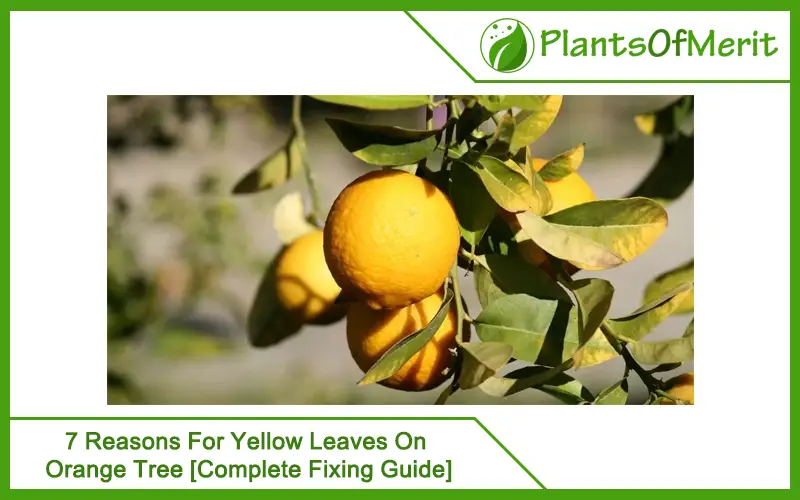Citrus fruits like oranges are loved by almost everyone. Oranges are very beneficial for health as they are a rich source of Vitamin C. People who enjoy gardening also plant orange trees in their garden to get fresh produce.
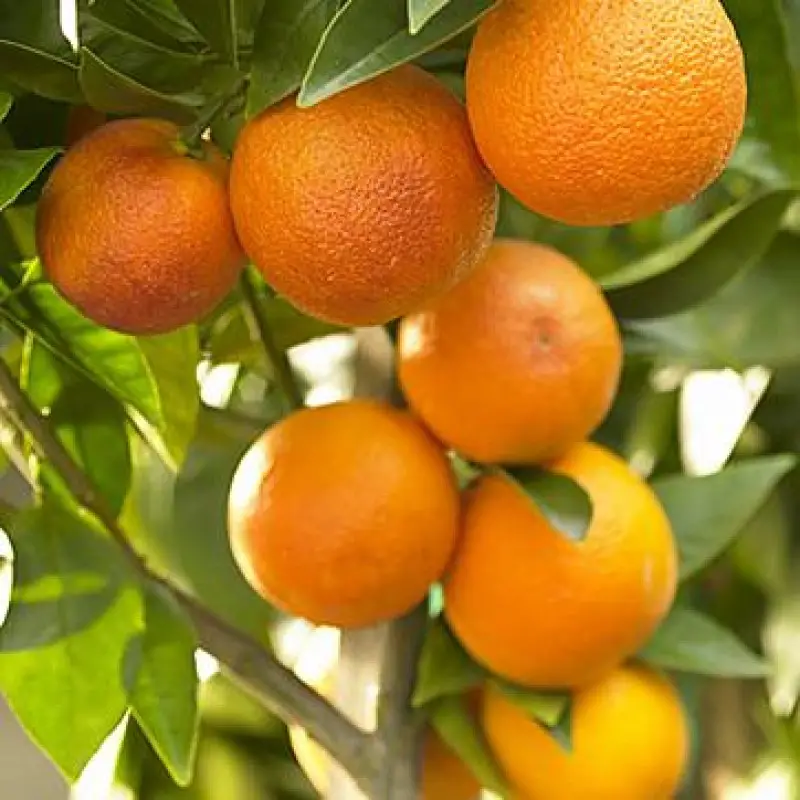
However, if you have an orange tree at home, you must take proper care of its health. If you want your orange tree to produce healthy fruits and flowers, taking care of your tree is a must. When not in good health, your orange tree may have yellow leaves due to reasons like:
1. Overwatering
The common symptoms of an under-watered plant are drying, browning, and curling of leaves whereas, the symptoms of overwatering are yellowing and drooping leaves. The primary causes of yellow leaves on orange trees are nutrient leaching and root rot.
First, root rot and waterlogging are caused by excessive watering, but more particularly by improper drainage systems. Waterlogging happens when there is stagnant water in the soil, for prolonged periods. If you leave it for long enough, the mold starts growing in the water, attacking the roots of the tree and the trees start decaying. This is mostly referred to as root rot. This procedure can take weeks or days, which is the reason why you must check it real soon. The most commonly found symptom of the rotting root is yellow leaves.
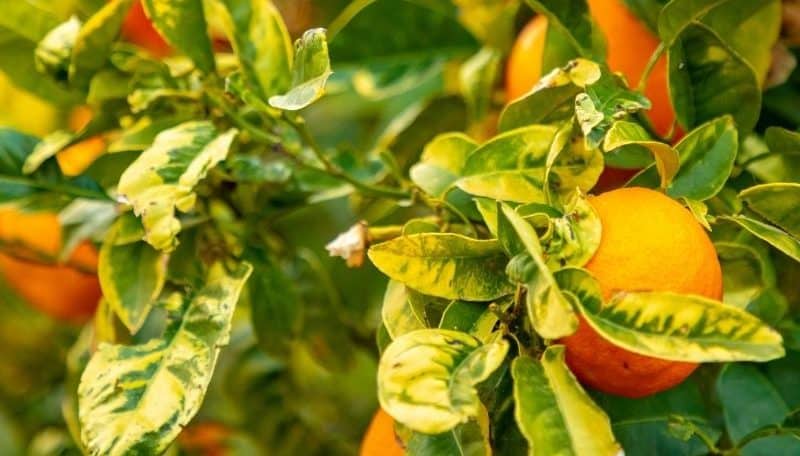
Drainage can be a confusing topic, particularly if you deal with soils that have lots of clay content. But, a poor drainage system can be caused by a fault in the watershed, ground, or compact soils which are common in construction sites and poor drainage. In case of poor drainage, here are the things you can do.
Solution
The potted citrus trees can be amended if you repot them in fresh soil. This is what works for most citrus plants which show yellow leaves due to root-rot and overwatering. Usually, transplanting the potted orange trees won’t lead to a lot of transplant shock because the pot is ample for containing the roots of the trees.
Ensure that you can support the root while transplanting and try to make sure that the process is quick. Though transplant shock may need as long as a year to recover, it is worth it for the potted trees like soils that have poor drainage. You must repot these citrus trees every 3 to 5 years when they outgrow the pots where they are potted and this keeps them from root binding.
2. Insufficient sunlight
In some cases, lack of sunlight can lead to yellow leaves. This is because if the plant doesn’t receive ample photosynthesis as well as chlorophyll. With time, the leaves will turn yellow or pale. If there’s a lack of sunlight for a prolonged period, the citrus tree will finish all its energy reserves and start declining in health.
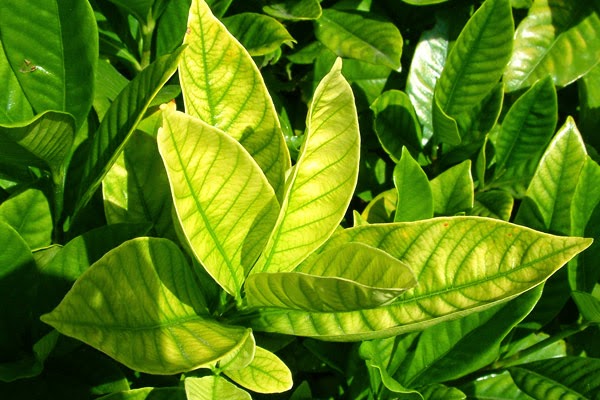
This also leads to high infection rates from diseases and pests. Sunlight is important for plants in their process of photosynthesis, changing the light to sugars that are used for its fruiting, growth, immune system, and others.
Usually, the topmost part of leaves is the main area that captures sunlight whereas; the bottom part of leaves is perform the transpiration function. It is easy to get more than 6 hours of sunlight in most of the places where these trees grow; it can be difficult to get in some areas, particularly in the winter season as the length of the day is decreased.
Solution
You must remember that the potted plants shouldn’t be kept near central heat because they can get dried quickly. This happens frequently to the potted lemon trees and the lemons start to dry and drop off the trees. After you move it to a cold room, it can recover and start growing again.
3. Diseases and infections
There are several infections and diseases which can cause the leaves of your orange tree to turn yellow. There are both viral as well as fungal infections which often get transmitted very easily. These infections can easily spread from one part of the plant to other healthy parts. If your orange tree contracts some of the other diseases, it will show different symptoms but the yellowing of leaves is the most common sign.
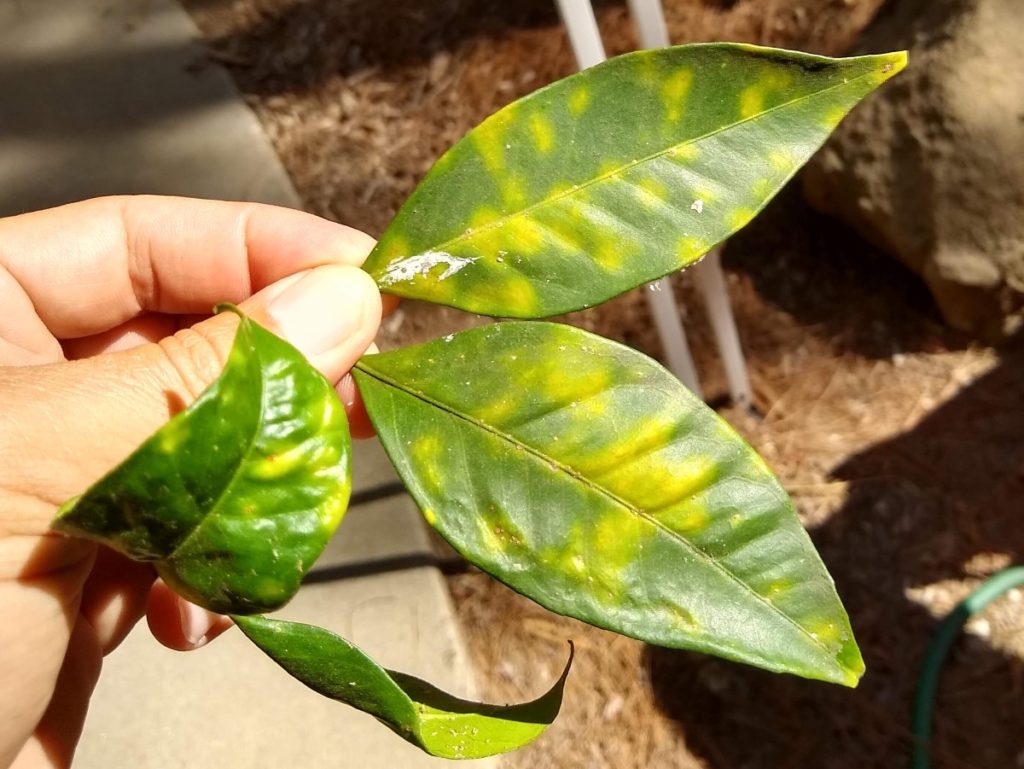
Solution
The best solution for these infections and diseases is to spray fertilizer on the infected parts of your orange tree. Be very careful throughout the entire process and make sure that you spray the fertilizer only on the infected areas of the tree. If you spray it on healthy parts of the tree, it will show adverse effects which can damage the tree.
4. Insects and pests
Some pests and insects can be responsible for the yellowing of leaves on your orange tree. These include whiteflies, aphids, mites, and citrus greening pests. If you have smaller insects that can be seen in clusters underneath the leaves of your citrus tree, they are aphids in most cases. Whiteflies and aphids suck the juice from leaves making them yellow. The best solution to this is spraying your tree with a water jet, with the help of Neem oil, or attracting ladybugs.
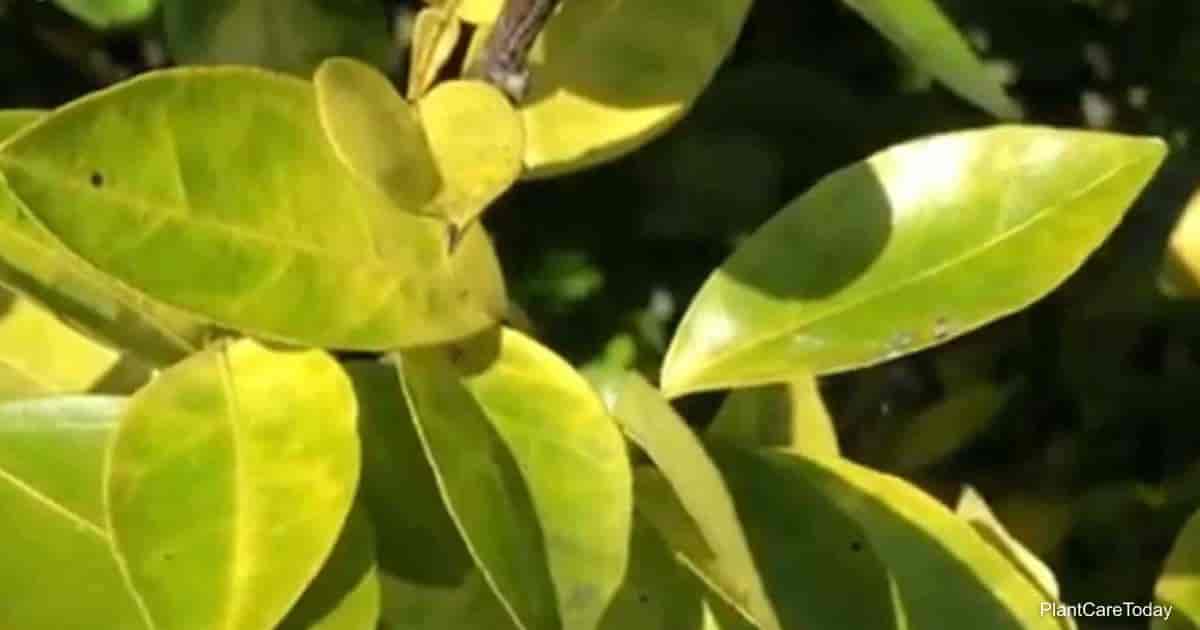
It is easy to understand whether your orange tree has any disease or not. One of the most damage-causing diseases is the citrus greening disease, which is very contagious. It causes yellowing and mottling of leaves. There are various signs of citrus greening like fruit and leaf drop, stunted fruit, and trees. You can normally locate this disease if a specific part of the tree turns yellow.
Solution
The most effective solution to this problem begins with choosing the best insecticide and pesticide. Once you get the best pesticide and insecticide, dilute it with water and transfer the mixture into a spray bottle. Before you apply this mixture to other areas of the tree, don’t forget to apply it to a small area and find whether it shows a reaction.
5. Environmental change
Changes in weather and climate are also responsible for orange trees turning yellow at times. This is completely natural and nature is not in our hands. Nobody can take control over Mother Nature and that’s it. There can be times when the weather is not suited for the proper growth of your orange tree. Moving the plant from one environment to the other may also cause the leaves to turn yellow.
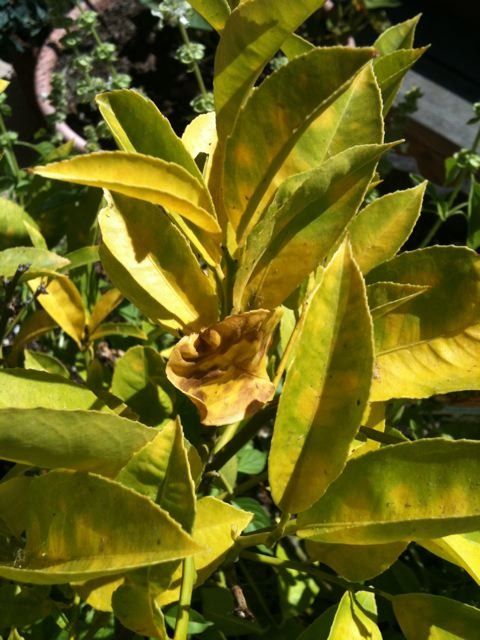
Solution
There is no appropriate solution to this problem as it is a natural cause. All you can do is do research and understand the requirements of the tree. You must know whether the orange tree needs more warmth and sunlight or rain. In case the weather is too much, you can water the plant and prevent it from getting dry.
6. Less nitrogen
Yellow leaves often indicate that your plant isn’t getting sufficient nitrogen. Do a soil test for the soil around the root base for Potassium, Phosphorus, and Nitrogen. You can do this with an easy home test which can be availed from hardware stores and online too. This test will show you the level of nutrients present in the soil and will give recommendations about the amount you should add.
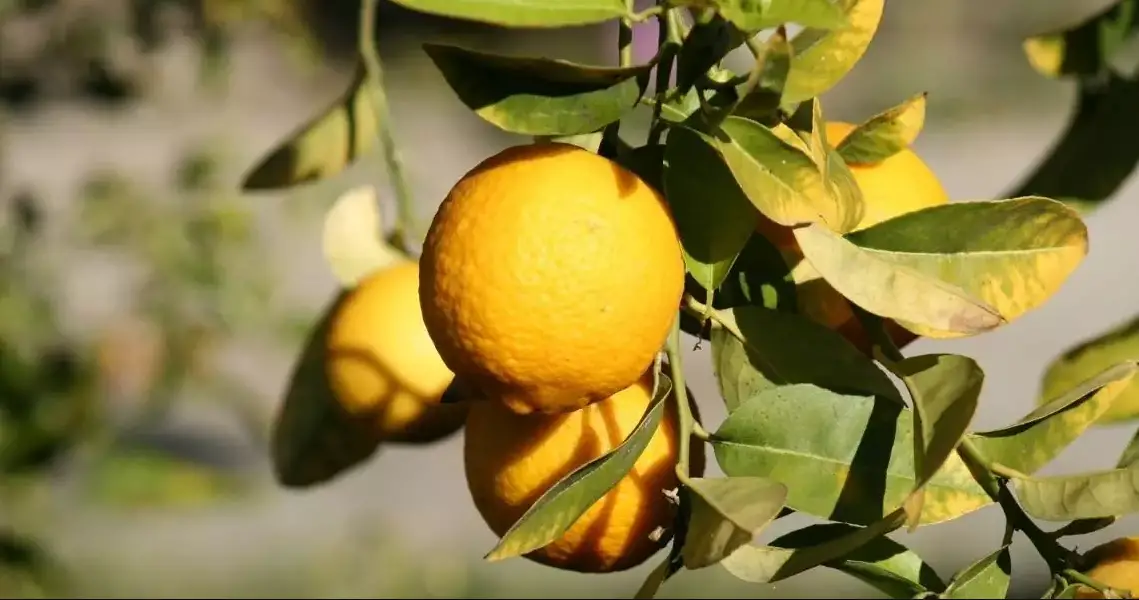
Usually, the amounts which are recommended in the soil test kits are based on levels of synthetic fertilizer, so you may just have to adjust for natural. Most of the trees show results within 14 days of usage.
Solution
After you perform the soil test, you will get to know what amount of nitrogen you should add to the soil. All you need to do is fulfill the nitrogen requirement of your plant by adding as much as needed. Make sure that you don’t add more than what is needed as it can become more harmful than beneficial for your orange tree.
7. Improper soil
As a gardener, you must know the fact that the soil type suitable for plants is not the same. It differs from one plant to another. Some plants can grow better in moist soil whereas others can thrive well in sandy soil. If the soil type is not proper and isn’t suitable for your tree, it won’t grow properly. Instead, it will show symptoms of bad health like yellow leaves.
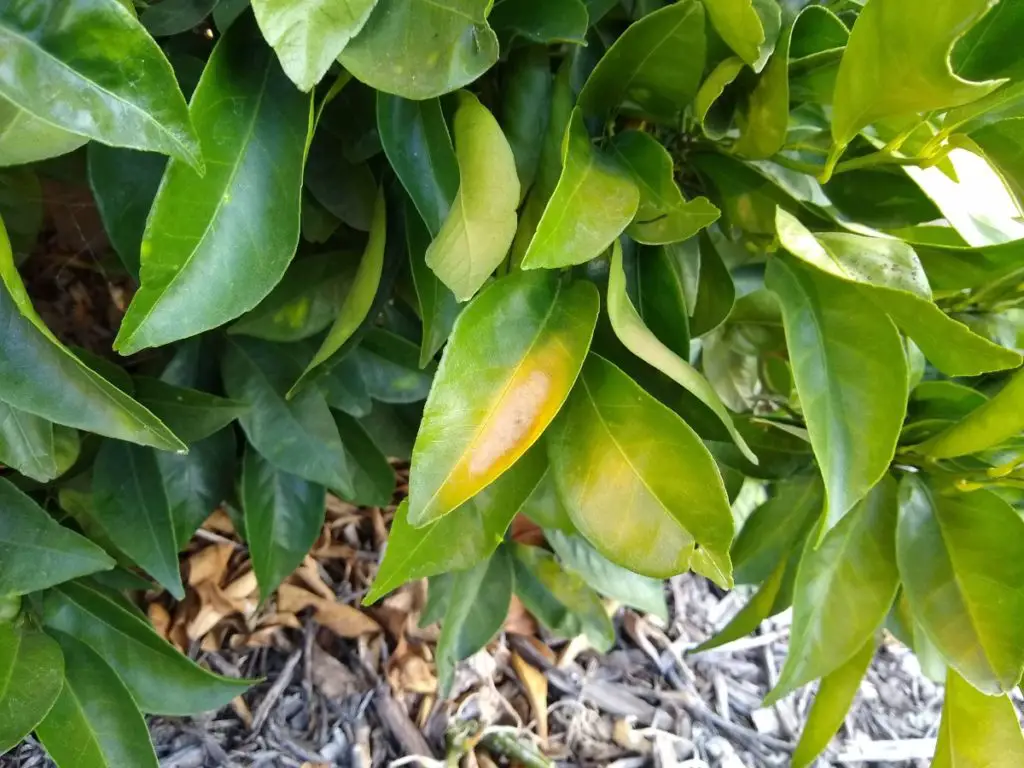
Solution
Check whether the soil in which you have planted your orange tree is suitable or not. If not, try uprooting the plant and replant it in the proper soil where it can grow properly. Uprooting will be easier if you’ve planted the tree in a pot. Even if it is planted directly in the soil, you can easily uproot it and replant it.
Conclusion
These are some of the possible reasons why there is yellowing of leaves in orange trees. If your orange tree shows yellow leaves, there’s no need to worry as you know the reasons now. Just try to get confirmed about the reason and start following the proper treatment procedure required for that particular cause. All reasons mentioned above have their solutions explained here too.

